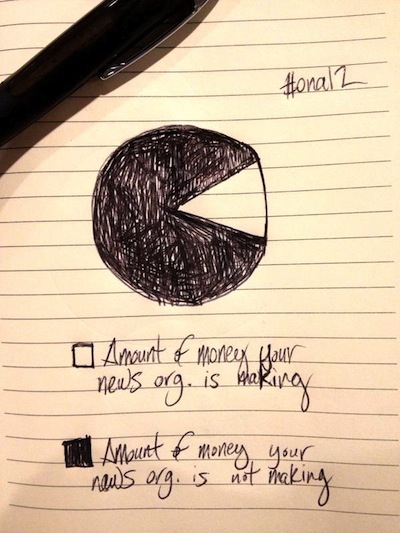You may have dipped into the fast-moving stream of #ONA12 tweets that came out of the Online News Association conference in San Francisco over the weekend. We wanted to mix things up a little, asking attendees to create physical tweets by jotting down thoughts, drawings, overheards, and other moments from the conference — then tweeting your #IRLtweets creations.
Think of it as a slow tweet movement.
Many thanks to those of you who joined in, and to everyone at ONA for getting us thinking. Here’s a sampling of what we all made:


We also really dug some of the sketched notes that came out of the conference. Check out some from Susie Cagle:
Plus some of Dan Carino’s sketches of the conference:
As well as a few of Graham Clark’s session notes:
What did we miss? We’d love to add your #IRLtweets from ONA to this collection.